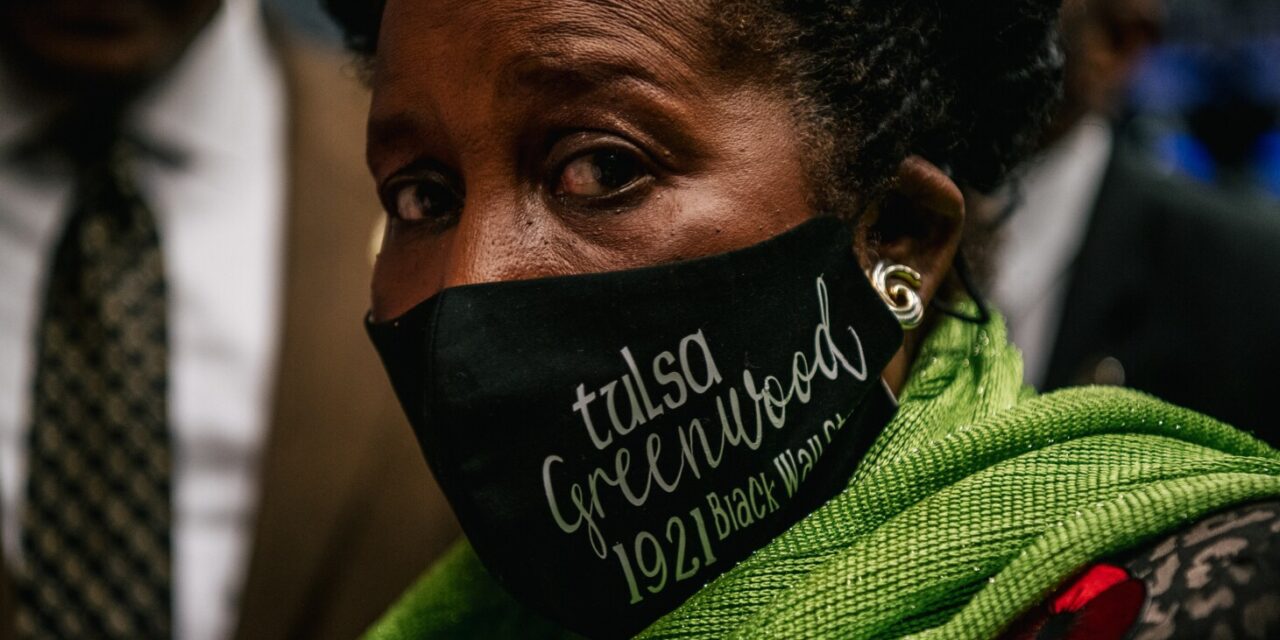
It’s been called “the largest crime scene in the history of this country.”
An estimated 300 people were murdered. Another 800 or more were seriously injured. More than 1,250 homes were burned to the ground, along with every church, school and business. About 10,000 people were left homeless. Damage is estimated at about $200 million in today’s dollars.
Not one of the murderous white mob that obliterated the affluent Black neighborhood of Greenwood in Tulsa, Oklahoma, in 1921 was prosecuted. Every insurance claim filed by a Black property owner was denied.
The Tulsa Race Massacre is perhaps history’s clearest example of America’s persistent reluctance to confront the legacy of white supremacy and of the intense, enduring economic scars Black Americans bear to this day.
A newly launched federal review of the massacre by the U.S. Department of Justice is a long-overdue opportunity to achieve some measure of justice for a monstrous act of racist terrorism that nearly was lost to history.
The inflammatory front-page article in the Tulsa Tribune that ignited the massacre, headlined “Nab Negro for Attacking Girl in Elevator” was torn from the newspaper’s May 31,1921, edition before it was microfilmed. The incident didn’t become part of Oklahoma schools’ official curriculum until 2020.
Years of denial
“Hard history,” the grisly record of slavery, white supremacy and racial injustice, has long been suppressed in the United States. The Jim Crow south of my childhood was steeped in the mythology of the “Lost Cause” — the fictitious claim the Civil War was not fought over slavery but against the encroachment of federal power.
The 1619 Project, the New York Times’ acclaimed examination of slavery’s role in shaping the American present, was met with hysterical backlash that fueled an insidious frenzy of censorship legislation.
The assault of a 17-year-old white elevator operator by a 19-year-old Black shoeshiner, as reported by the Tulsa Tribune, likely was fictitious. But witnesses at the time suggested the real cause of the massacre was white resentment of Black prosperity.
The Chicago Defender reported in June 1921:
“Letters had been sent to prominent men of the Race demanding that they stop extending the bounds of the district within which they were segregated. A rumor has been extant for some time to the effect that it was the desire of white industry or of private citizens to appropriate the lands which the Race had gained possession of. Since the area had become a segregated district to them, the value had increased and white speculators saw a chance for immense profits if they could only drive the inhabitants out.”
A state commission that examined the massacre in 2001 agreed, saying, “At the time, many said that this was no spontaneous eruption of the rabble; it was planned and executed by the elite. Quite a few people — including some members of this commission — have since studied the question and are persuaded that this is so, that the Tulsa race riot was the result of a conspiracy. This is a serious position and a provable position — if one looks at certain evidence in certain ways.”
Assistant U.S. Attorney General for Civil Rights Kristen Clarke is conducting the review under the Emmett Till Unsolved Civil Rights Crime Act, which allows the Justice Department to investigate fatalities caused by civil rights crimes that occurred on or before Dec. 31, 1979.
Last month marked the 69th anniversary of the acquittal by an all-white jury of the two men who murdered 14-year-old Emmett Till in Money, Mississippi. The image of his brutalized corpse at his open-casket funeral was a catalyst for the Civil Rights Movement.
“For almost a century, African Americans were lynched with regularity and impunity. Now, thanks to a mother’s determination to expose the barbarousness of the crime, the public could no longer pretend to ignore what they couldn’t see,” Time magazine wrote when naming a photograph published in Jet one of the 100 most influential images of all time.
Now, the public no longer can pretend to ignore the Tulsa Massacre.
While Clarke has “no expectation that there are living perpetrators who could be criminally prosecuted by us or by the state,” the department will issue a report that will “reflect the Justice Department’s exhaustive efforts to seek justice, at bare minimum, [and] prevent these victims and the tragic ordeals they endured from being lost to history.”
Marc H. Morial is president and CEO of the National Urban League and was mayor of New Orleans from 1994 to 2002. He writes a twice-monthly column for the Sun-Times.
Send letters to letters@suntimes.com
Get Opinions content delivered to your inbox. Sign up for our weekly newsletter here.



